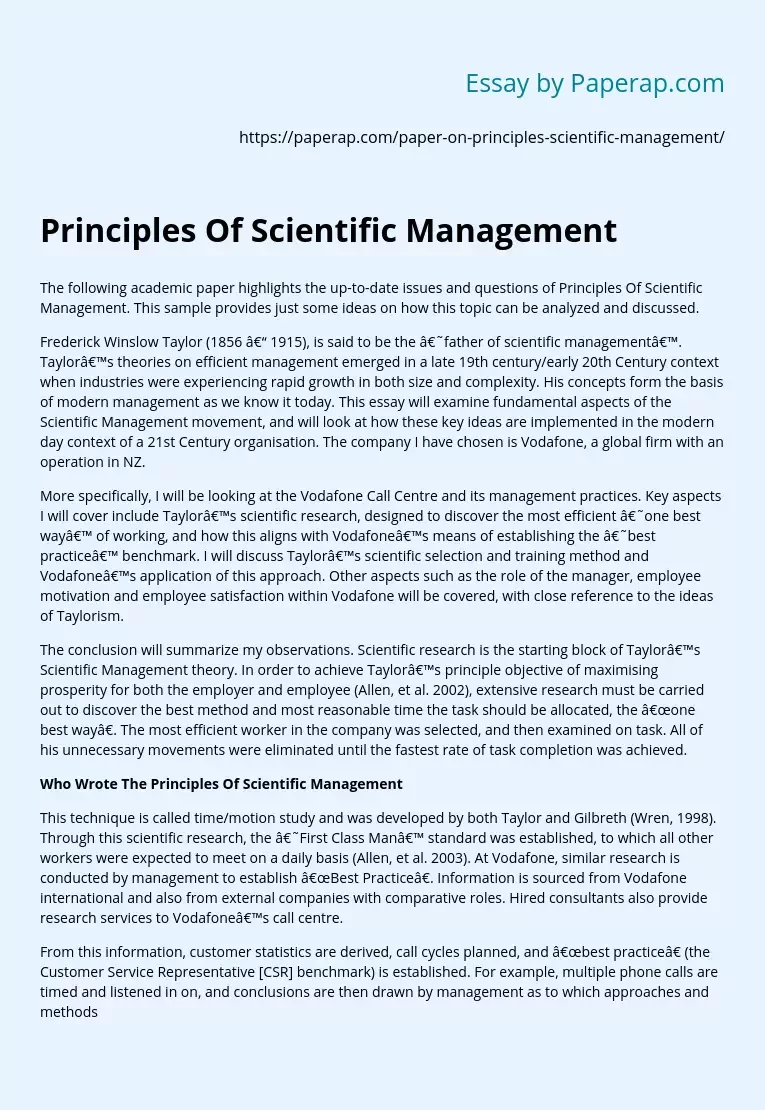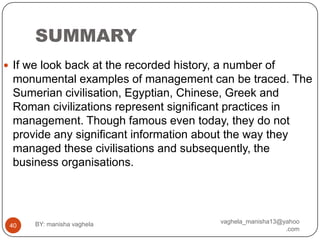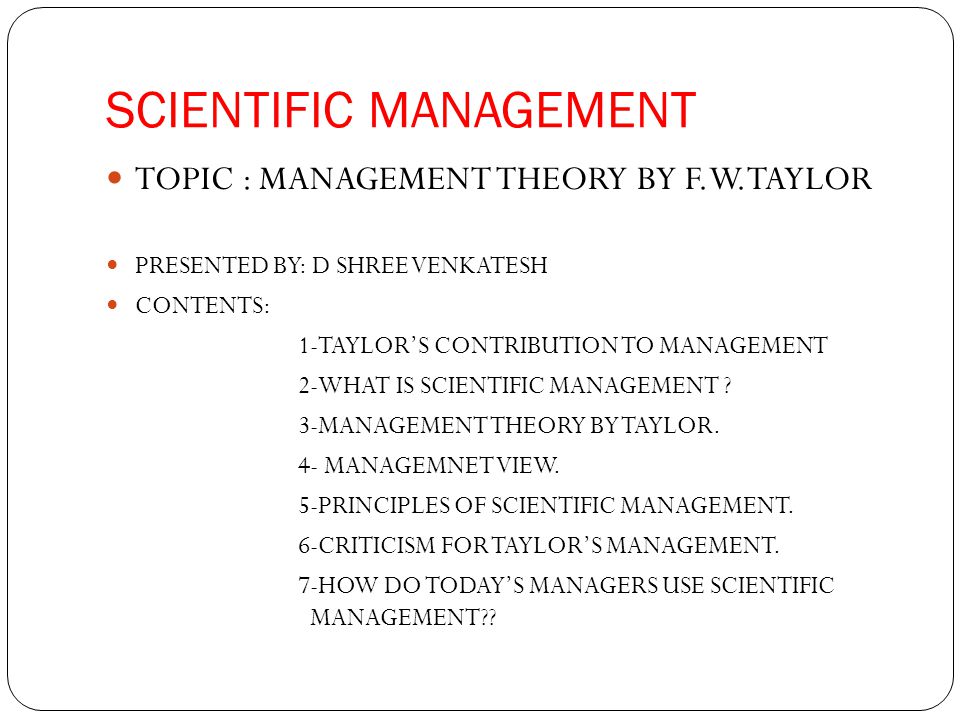Scientific management theory, also known as Taylorism, is a management approach that was developed in the late 19th and early 20th centuries by Frederick Winslow Taylor. It is based on the idea that there is one "best" way to perform a task, and that this method can be determined through systematic analysis and experimentation. The goal of scientific management is to increase efficiency and productivity by breaking down tasks into their individual components and optimizing each part of the process.
One example of scientific management theory in action is the use of time and motion studies. These studies involve analyzing the movements of workers as they perform a task, with the goal of identifying any unnecessary or inefficient steps that can be eliminated. This can be done through the use of stopwatches and other measuring tools, as well as by filming workers as they perform their tasks. By identifying and eliminating unnecessary steps, companies can reduce the amount of time and effort required to complete a task, resulting in increased efficiency and productivity.
Another example of scientific management theory is the use of specialized machinery and equipment. In the early 20th century, Taylor and his followers argued that workers would be more productive if they were given the tools and equipment specifically designed for the tasks they were performing. This meant that workers were no longer required to perform a variety of tasks, but instead focused on a single task using specialized equipment. This allowed companies to increase efficiency by ensuring that workers were using the most efficient tools and techniques for their tasks.
A third example of scientific management theory is the use of standardized work procedures. Taylor believed that tasks should be broken down into their individual components and that each component should be standardized to ensure that it is performed in the most efficient way possible. This means that tasks are performed in the same way every time, with no variation or deviation from the standard procedure. By standardizing work procedures, companies can increase efficiency and productivity by ensuring that tasks are completed in the most efficient way possible.
Overall, scientific management theory has had a significant impact on the way that businesses are managed and organized. By focusing on efficiency and productivity, Taylor and his followers were able to help companies increase their profitability and competitiveness. While the approach has been criticized for its focus on mechanization and standardization, it remains an important part of the management toolkit and continues to be used in a variety of industries.
Scientific Management

Delegate Tasks Managers should not bury one employee under a bunch of tasks. These theories classification fall under the pre-scientific theories, behavioral theory, classical theory and the modern management theory. It can dramatically change the office environment in a positive mode. Then, if a worker took more than the standard time, his pay was docked. Such an imbalance of power and resultant dissatisfaction has the potential to polarise industrial relations leading to increased risks of strike action and disruption. They only put in the amount of effort that would keep them from being fired. Reference List Boddy, D.
Is Scientific Management Theory Relevant in the Modern Workplace?

The Five Functions of Management Within Managerial Activities, Henri Fayol specifies five primary functions or elements. These are included in those techniques. This all led to big businesses producing mass production of goods. He settled on money. Owners frequently labored next to employees, knew what they were capable of, and closely directed their work. Soon afterward, two management theorists, Frank and Lillian Gilbreth, came up with the idea of filming workers to analyze their motions.
Scientific Management Theories & Approach

Scientific management grew in popularity among big businesses because productivity rose, proving that it worked. Update Table of Contents What is Scientific Theory of Management? Taylor during this formative period see Taylor, 1911. Anyone who is especially successful is rewarded with financial benefits. Every task is broken down to the smallest motion and translated into an exact procedure that must be followed to complete that task. This process includes planning, organization, motivation, and control to form a fruitful function of the company, which will contribute to the achievement of goals and objectives. Therefore, it may be an unemployment tool.
What is the Scientific Theory of Management?

England: Cambridge University Press. Likewise, the rationalization of processes into discrete, unambiguous units with defined work instructions has laid the foundations for knowledge transfer, automation and eventual offshoring Drucker, 1981 — strategies that continue to be implemented in many multinational corporations today as management theory, and management itself, evolves with changing times Witzel and Warner, 2013. The procedure for everything from making a burger to mopping the floor is the same — regardless of geographic location. The founding father of scientific management theory was Frederick Taylor. Taylor also believed that management and labor should cooperate and work together to meet goals. Employees who adapted to efficient techniques were rewarded as a result of higher productivity.
F.W. Taylor’s Scientific Management Theory

The theory of scientific management has its roots in the studies conducted by F. When Taylor began his scientific management experiments, he focused on increasing efficiency by reducing the amount of time needed to perform tasks. We have already pointed to the shortcomings of the guideline of thumb of thumb approach of control. However, the scientific management theory could be a starting point for designing your own management style. Although there is much to criticise about Taylorism and its early implementation, it should also be acknowledged that its advent paved the way for many of the management theories and methodologies that are followed today. Learn more Su, Y. These experiments gave rise to the theory that employees are more motivated by personal attention and being part of a group than they are by money or even working conditions.









